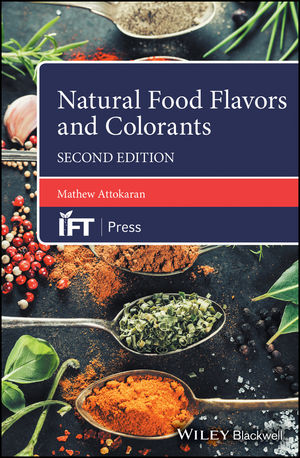An even higher percentage, more than 70 percent stressed they wanted no artificial colors, flavors or preservatives. Consumer consciousness of foods and their impact on health and longevity has risen to new levels on a global basis, and regional regulations on food labeling have become more complicated as a result. There’s no doubt that the desire for “natural” as a descriptor is a hard trend. That same survey also noted that “lower in sugar” and “no artificial sweeteners” were among the top 10 purchase factors for parents.
So how can a candy manufacturer or candy maker address these consumer demands?
Stevia answers the call
Fortunately for candy manufacturers, there is a natural sweetener solution that meets the needs and concerns expressed by consumers. It’s stevia. Stevia delivers a clean label, is a sustainable sweetener, has a natural goodness and provides traceability important to today’s consumer lifestyle.
Why stevia? Why RebA? RebA is a natural, zero-calorie, high-potency sweetener extracted and purified from the leaves of the stevia rebaudiana bertoni plant, a plant known for centuries in Latin America for its sweet taste.
Moreover, the RebA extract provides a cleaner sweetness with less bitterness and licorice taste than the taste associated with other stevia products. It also is very stable under most temperature and pH conditions.
It’s important to emphasize that the name “stevia” represents a complex group of sweeteners — there are hundreds of varieties of the stevia rebaudiana bertoni plant that have evolved over time, and each variety has different distributions of steviol glycosides, the sweet component, within its leaves.
These components have different sweetness intensities and different sweetness/bitterness profiles. The term “stevia” can actually refer to stevia leaves or stevia extracts, and “stevia extracts” can refer to extracts high in steviol glycosides, or extracts high in stevioside and rebaudioside A (RebA) or extracts high in RebA.
Thus, it is very important for candy and food technologists to understand the exact content of the extract they are receiving, as this will impact the overall sweetness profile of the final product. Batch-to-batch consistency of the extract is also important to the extended quality of a final product.
Ingredion’s Corn Products division controls the consistency of the product from the farm through to the final extract, using a patented high RebA variety grown and harvested with consistency. Steviol glycoside distributions are ensured through consistent testing methodology verified through check sample testing and use of verified standards.
Overcoming formulation challenges
Replacement of sucrose in food products in not an easy task because sucrose is a very unique natural sweetener — it provides the sweetness quality, viscosity and flavor profile very familiar to consumers. Other high potency sweeteners have tried to emulate these qualities through combinations with other less-natural high potency sweeteners and texture agents.
Every food category and formulation provides unique challenges and opportunities to try to replace the uniqueness of sucrose. So after decades of attempts to provide sweetener alternatives, what have we learned?
Well, think of sweetness as a flavor; whenever ingredients in a food system are changed, the flavor profile is always altered. As a result, duplicating the flavors in the original product requires some effort. The same is true for sweetness — there is no “quick fix” or “flavor kit” that will work across foods or even within a food segment. Every formulation is unique, and formulation of a new sweetener system or solution is necessary.
But what about the bitterness issue always associated with natural sweeteners? Is it an issue? The answer lies in several factors, says Ron Deis, director, applications, sweeteners and polyols, Ingredion. The first is the level of sweetness one needs in the product (sugar equivalence), he says. And the second depends on other ingredients in the formulation and their impact on the overall sweetness of the product, such as other sweeteners (including sucrose), flavors, and modifying agents such as fruit extracts and juices or bulking agents (see Figure 1).
In nutritive sweeteners, bitterness almost always decreases with increasing concentration, Deis explains. This is often not true for high potency sweeteners (e.g. saccharin, acesulfame K), and mostly not true for natural high potency sweeteners, he adds.
The effect of this for RebA can be seen in the work of Schiffman, et.al. (1995) and in a plot of perceived sweetness vs. concentration for Enliten® vs. sucrose (2009), he says. Above 6 percent sucrose equivalence (or 300 ppm Enliten), bitterness increases, affecting the perceived sweetness. This means that the ideal working space in many formulations for RebA is 100-300 ppm RebA (see Figure 2).
So what does this mean for use of RebA in a formulation? The formulator can use the benefits of RebA as a natural sweetener, and use other ingredients, sweeteners and flavors to modify the overall sweetness profile to create the ideal product.
Deis recommends that the candy or food technologist should first determine the key goals for the end product, such as is “all-natural” a goal? Can one use sugars or sucrose (sugar reduction)? Is the product to be reduced calorie? What are the cost parameters? Answers to these questions are needed to determine approaches to control the sweetness level and profile, how well one can limit aftertaste and/or lingering issues, and how you can modify flavor and texture (and don’t forget to control issues like solids and color). Depending on the answers to these questions, the list of other sweeteners, texture agents and flavor systems can be long — or very short, and additional changes may be needed.
Hands-on support
Corn Products has successfully formulated a wide range of products with RebA, and readily shares this experience by partnering with its customers. The possibilities are endless — stevia can be used in a wide range of confectionery and snack products, RebA is not a stand-alone sweetener in most uses, but experience has shown that it can be formulated for a wide range of naturally sweetened products. Sweeteners, like flavors, are formulation-specific, and creative use of a combination of ingredients is necessary to achieve the best end result.









